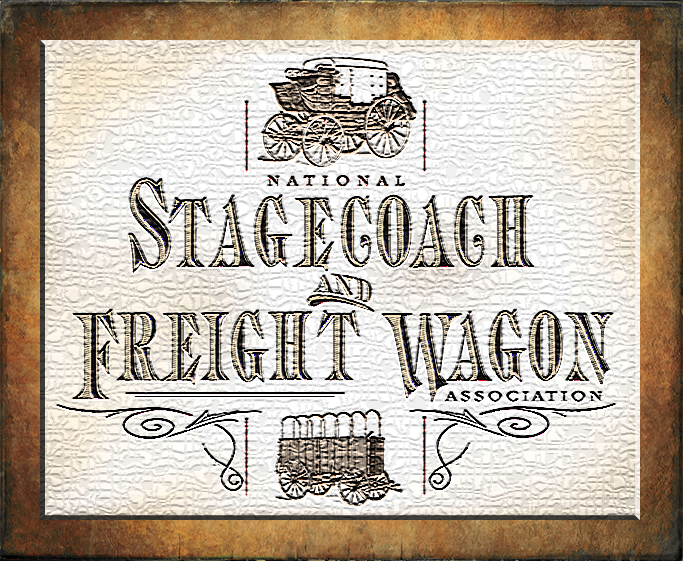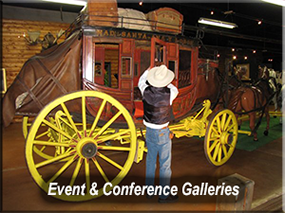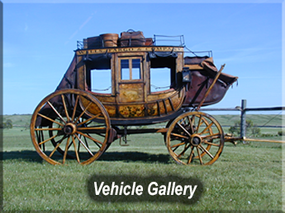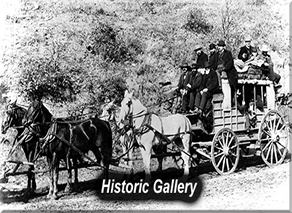Conestoga Wagon
Information on this page taken from Spring 2010 NSFWA Newsletter
Description
The Conestoga wagon was a heavy-duty freight wagon developed in then Conestoga Valley near Lancaster, Pennsylvania.
It was primarily used in the eastern part of the U.S.
Characteristics
- Could carry several tons of supplies and gear
- Between 8 and 13 bows with accompanying bow staple hardware
- Covered top to protect freight
- Raked or flared end gate designs
- Feed box
- Linch pin wheels
- Tool box on the left side
- Extra side rails
- Bed was bowed upward to keep freight from shifting
History
While the Conestoga is not typically thought of as a “western” vehicle, it was among the very first heavy wagons to travel America’s primitive roads and trails. As such, it helped grow areas that were considered the “West” in the early development of the United States. Dominating areas from the Ohio Valley and Appalachian Mountains sections to the more populated eastern states, most of these wagons were used in the century between 1750 and 1850. Undoubtedly, there were exceptions to this time frame, but the span does give us a strong reference to the primary era influenced by these vehicles.
German and Swiss emigrants in Lancaster County, Pennsylvania, are generally given recognition for developing these wagons, while the name, itself, is taken from the Conestoga River and Native Americans in that area. As large freighters, there were thousands of these “big rigs” daily hauling everything from fruits, vegetables, and grain to iron, equipment, clothing, and weapons between Pittsburgh and Philadelphia, Pennsylvania. The National Road—today’s U.S. 40—included the route from Baltimore to Wheeling, West Virginia, and saw equally substantial traffic.
Similar Vehicles
Even with this information available, there are other late 19th and even 20th century designs that, because they share similar construction traits with a Conestoga, are sometimes confused with these grand ships of commerce. Vintage English farm wagons, smaller schooners, tobacco wagons from the Carolinas, and even what’s often referred to as a “farm-style Conestoga” carry related design influences, but none is a Conestoga. Each of these is an example of a lighter wagon. An important distinction to keep in mind is that the Conestoga was a large, heavy transport. That immediately implies several things. These wagons will almost always have between 8 and 13 bows with accompanying bow staple hardware. These details are important as most true Conestoga freighters would have been equipped to cover and protect the cargo. Of course, there are always exceptions, and there were often variations between the wagons of the Conestoga “regulars” and those of the “sharpshooters.” The term “regulars” was generally applied to those who made their living by freighting, while “sharpshooters” usually referred to farmers and occasional teamsters who got involved when freighting was more profitable than their typical work.
Recommended Reading
- “The Old Pike – A History of the National Road” by T.B. Seawright (1894)
- “Conestoga Six Horse Bell Teams” by John Omwake (1930)
- “Conestoga Wagon, 1750-1850” by George Shumway, Edward Durell, & Howard C. Frey (1964, 1966, 1968)
- “Conestoga Wagon – Masterpiece of the Blacksmith” by Arthur L. Reist, copyright 1975.
- “The Adventures of a Waggon Tracker” by Franklin A. Zirkle, copyright 2005.
- “The Conestoga Wagon, Ship of Inland Commerce” by Harry S. Hill – pamphlet copyright 1930 and 1958



